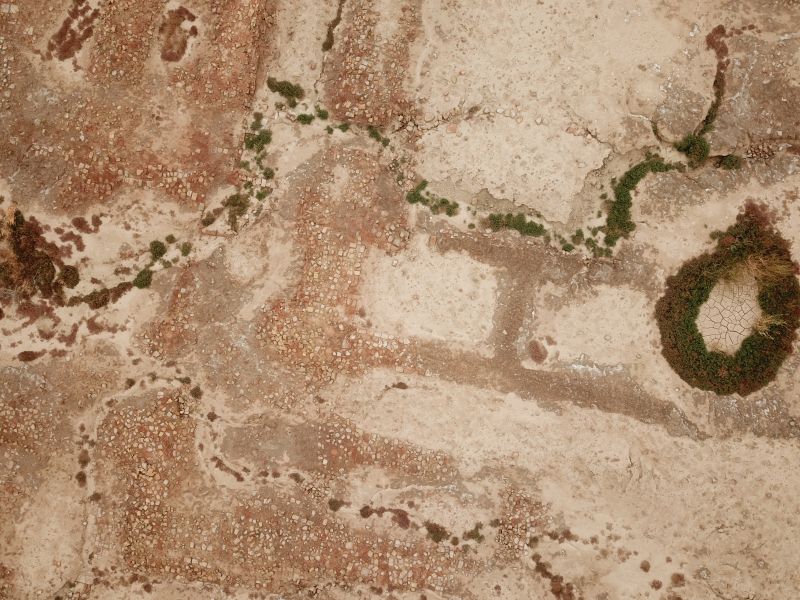The temple complex of Giparu (alternatively E-gig-par or Gig-par-ku) is located on the south side of the ziggurat, abutting the westside of E-Dublal-Mah. The multi-roomed building served as the official residence of the entu-priestess, meaning ‘Lady Deity or Lady Who Is Goddess’, as well as her staff and servants. The priestess was either a daughter or sister of the reigning king, who essentially became the human wife of the Moon god Nanna. Her counterpart was the goddess Ningal, the mythical consort of Nanna, who also retained apartments within the complex. The complex was composed of gate towers surrounding a building made up of a series of corridors leading to and around 82 separate rooms. The rooms included an inner and outer courtyard, kitchens, storage rooms, workrooms, living quarters, a sanctuary, shrines and two temples, one for an unknown deity, and one, according to Woolley, dedicated to the goddess Ningal.
Originally built of mudbrick sometime during the Early Dynastic Period, it was still in use during the Akkadian Dynasty when Enheduanna, considered to be the first female author in history, served as the temple’s priestess. Over the course of millennia, the building experienced varying episodes of deterioration, destruction and restorations. This included rebuilding efforts by Ur-Nammu and his grandson Amar-Sin, destruction by the Elamites, as well as by Babylonian troops under Samsu-iluna, and reconstructions by kings En-an-na-tumma of the Isin Dynasty, Kari-galzu of the Kassite Dynasty, and Nabonidus of the Neo Babylonian Empire. The final destruction and rebuilding occurred when Cyrus the Great of Persia defeated Nabonidus and restored the damaged complex in the sixth century BCE.
According to Sir Leonard Woolley, “the building, with its two temples, its minor shrines, and its fortified walls, gives us the most complete plan that we yet possess of an early Sumerian temple complex.”
